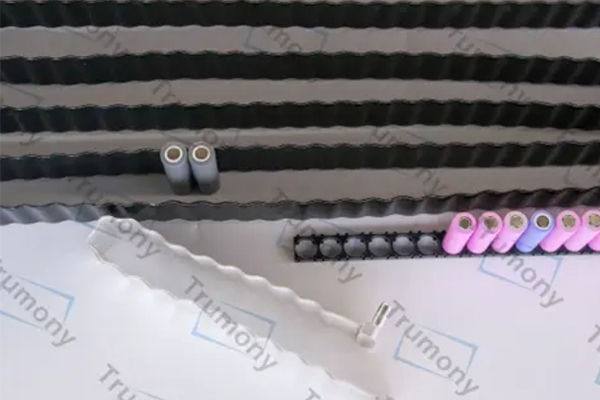1. Air cooling
Air cooling uses air as a heat transfer medium and is divided into two methods: passive air cooling and active air cooling. Passive air cooling directly uses external air for heat exchange, has a simple structure, and is low in cost, but has limited cooling effect. Active air cooling pre-processes external air before it enters the battery system, such as heating or cooling, to improve cooling efficiency. However, the thermal conductivity of air cooling is low, and it is difficult to meet the thermal management requirements of high energy density batteries.
2. Liquid cooling
Liquid cooling uses coolant as a heat transfer medium, which is usually circulated in the battery pack through a pump and piping system. According to the contact method, liquid cooling can be divided into direct contact and indirect contact. Direct contact directly immerses the battery pack in the coolant, while indirect contact arranges cooling pipes or jackets between battery modules. Liquid cooling has the advantages of high cooling efficiency and good temperature uniformity, but it has high requirements for the sealing of the system and increases the complexity and weight of the system.
3. Heat pipe cooling
Heat pipe cooling uses the latent heat of phase change materials during evaporation and condensation to transfer heat. The heat pipe consists of an evaporation section, an insulation section, and a condensation section, which can quickly conduct heat and achieve efficient cooling. However, the heat pipe has a complex structure, high manufacturing cost, and the heat transfer performance may decrease after long-term use. It has not yet been widely used in battery thermal management systems.
4. Phase change material cooling
Phase change material (PCM) absorbs or releases a large amount of heat by changing its physical state within a specific temperature range. When PCM is applied to a battery thermal management system, it can absorb heat and reduce the battery temperature when the battery temperature rises. However, PCM has a low thermal conductivity and may have a risk of leakage. It needs to be used in combination with other cooling methods to improve the cooling effect.
5. Immersion cooling
Immersion cooling directly immerses the battery in the coolant, which has the advantages of simple structure, rapid cooling, and good temperature uniformity. Compared with traditional indirect liquid cooling, air cooling, and phase change cooling, immersion cooling shows good application prospects in the thermal management of high power density batteries.
Effective battery pack cooling technology is essential to improve battery performance, extend service life, and ensure safety. As battery energy density and charge and discharge rates increase, a single cooling method is difficult to meet the demand, and composite cooling technology shows broad application prospects. Future research should focus on developing efficient, lightweight, and cost-controlled cooling systems to adapt to the rapid development of electric vehicles and energy storage systems.

